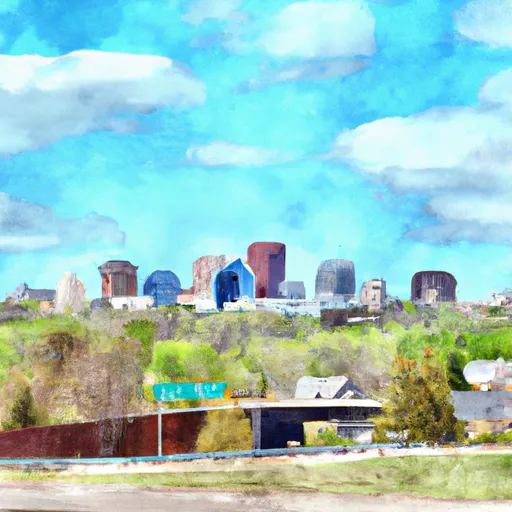-
 Snoflo Premium
Snoflo Premium
Get unlimited access to all our content
With no Ad interruptions! - Start Your Free Trial Login with existing account
Welcome
Eden Index
Climate
6.7
•
Recreation
2.5
•
Community
1.0
•
Safeguard
3.8/10

Welcome, Minnesota is a small town located in the southern part of the state. It experiences a humid continental climate, characterized by warm summers and cold winters. The average temperature ranges from around 20°F (-6°C) in winter to 80°F (27°C) in summer. Precipitation is evenly distributed throughout the year, with an average rainfall of about 30 inches.
The town is also home to several hydrological constituents, including lakes, rivers, and wetlands. The Des Moines River flows nearby, offering opportunities for fishing, kayaking, and boating. There are also numerous smaller lakes in the area where visitors can enjoy swimming, picnicking, and camping. Wetlands provide a habitat for diverse wildlife and are ideal for birdwatching and nature photography.
In terms of outdoor recreation, Welcome provides various opportunities. The town has several parks with trails for hiking and biking, as well as playgrounds for children. The nearby East Chain Wildlife Area offers excellent hunting and wildlife observation opportunities. Additionally, during the winter months, residents and visitors can partake in ice fishing, snowmobiling, and cross-country skiing. Welcome, Minnesota is a charming destination for outdoor enthusiasts to enjoy the natural beauty and recreational activities it has to offer.
What is the Eden Index?
The Snoflo Eden Index serves as a comprehensive rating system for regions, evaluating their desirability through a holistic assessment of climate health, outdoor recreation opportunities, and natural disaster risk, acknowledging the profound impact of these factors on livability and well-being.
Climate Health Indicator (CHI): 6.7
Welcome receives approximately
793mm of rain per year,
with humidity levels near 81%
and air temperatures averaging around
8°C.
Welcome has a plant hardyness factor of
5, meaning
plants and agriculture in this region thrive during a short period during spring and early summer. Most
plants will die off during the colder winter months.
By considering the ideal temperature range, reliable water supplies, clean air, and stable seasonal rain or snowpacks, the Climate Health Indicator (CHI) underscores the significance of a healthy climate as the foundation for quality living.
A healthy climate is paramount for ensuring a high quality of life and livability in a region, fostering both physical well-being and environmental harmony. This can be characterized by ideal temperatures, reliable access to water supplies, clean air, and consistent seasonal rain or snowpacks.
Weather Forecast
Streamflow Conditions
Minnesota
Area Rivers
Minnesota
Snowpack Depths
Minnesota
Reservoir Storage Capacity
Minnesota
Groundwater Levels
Recreational Opportunity Index (ROI): 2.5
The Recreational Opportunity Index (ROI) recognizes the value of outdoor recreational options, such as parks, hiking trails, camping sites, and fishing spots, while acknowledging that climate plays a pivotal role in ensuring the comfort and consistency of these experiences.
Access to outdoor recreational opportunities, encompassing activities such as parks, hiking, camping, and fishing, is crucial for overall well-being, and the climate plays a pivotal role in enabling and enhancing these experiences, ensuring that individuals can engage in nature-based activities comfortably and consistently.
Camping Areas
| Campground | Campsites | Reservations | Toilets | Showers | Elevation |
|---|---|---|---|---|---|
| Voss Park City Campground | None | 1,192 ft | |||
| Flandrau State Park | 90 | 972 ft | |||
| Truman City Park | None | 1,104 ft | |||
| Lake Hanska County Park | 22 | 1,027 ft | |||
| Sportsman Park - Sleepy Eye | 8 | 1,009 ft | |||
| Fort Ridgely State Park | 40 | 950 ft | |||
| Eagle Nest Park | 20 | 1,053 ft | |||
| Watona City Park | 28 | 986 ft | |||
| Mack Lake Co Park | None | 820 ft | |||
| St. James Municipal | 21 | 1,086 ft |
Nearby Fishing
Catastrophe Safeguard Index (CSI):
The Catastrophe Safeguard Index (CSI) recognizes that natural disaster risk, encompassing floods, fires, hurricanes, and tornadoes, can drastically affect safety and the overall appeal of an area.
The level of natural disaster risk in a region significantly affects safety and the overall livability, with climate change amplifying these risks by potentially increasing the frequency and intensity of events like floods, fires, hurricanes, and tornadoes, thereby posing substantial challenges to community resilience and well-being.
Community Resilience Indicator (CRI): 1.0
The Community Resilience Indicator (CRI) recognizes that education, healthcare, and socioeconomics are crucial to the well-being of a region. The CRI acknowledges the profound impact of these elements on residents' overall quality of life. By evaluating educational resources, healthcare accessibility, and economic inclusivity, the index captures the essential aspects that contribute to a thriving community, fostering resident satisfaction, equity, and social cohesion.

